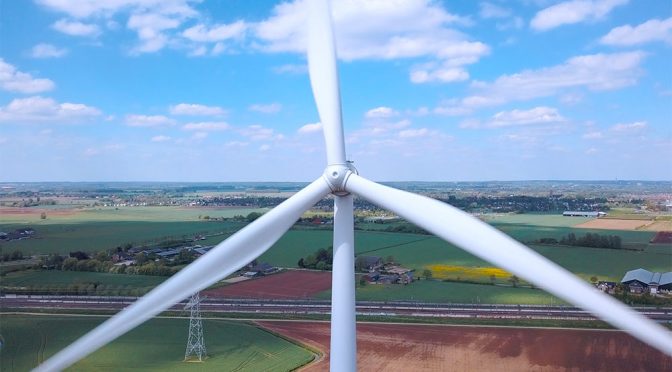The installed wind power and photovoltaic energy grew by 20% in 2019.
The new report on the Spanish electricity sector prepared by the Naturgy Foundation also includes the increase in production with combined cycles last year, which acted as backup energy for renewables, as well as the increase in the tariff deficit.
As stated in the publication “The Spanish electricity sector in numbers. Report 2019 ”, prepared by the Naturgy Foundation and presented by the economist specialized in energy markets Miguel Angel Lasheras,“ the renewable power installed in the Spanish peninsular system, without taking into account hydroelectricity, grew 20% last year, which it means that we have approached the annual record in renewable capacity, reaching 40% ”.
Regarding production, if hydro is considered, renewables generated 40% of the total, distributed as follows: 55% wind turbines, 20% hydraulic and 9% photovoltaic.
The Spanish electricity generation system reduced CO2 emissions by 23% last year. “Emissions fell to 50,000 ktn of CO2, and this with a rising price of CO2, which was close to € 25 / Tn,” according to Lasheras.
This trend is in line with the reduction in emissions since 2005, when the emission rights market was established. Since then, emissions from electricity generation have been reduced by almost 50% in Spain.
According to Lasheras, “we are at the beginning of a new deep investment cycle. In Spain, the relevance of this investment effort is evident, if we consider that it reinforces what has been done in the last 20 years, in which the support for renewables from the electricity rate has been around € 69,000 M.
On the other hand, Lasheras recalls that “in 2019, the investment effort in renewables that began to intensify in 2018 has occurred, above all, in wind and photovoltaic installations without specific remuneration, with 6.4 GW of new installed power, although still below the expected 8 GW ”.
Combined cycles fill the carbon gap
Another of the dynamics of the past year was the increase in the production of electricity with combined cycles, reaching 21% of total production. The increase in natural gas generation occurred in parallel with a reduction in coal generation, which last year only represented 4% of total production.
Regarding the utilization coefficient, the combined cycles went from 12.3% in 2018 to 23.8% in 2019, while coal went from 41.6% to 13.2%.
According to Lasheras, “it should be noted that one of the events that most contributed to the reduction of emissions caused by electricity generation, in addition to renewables, was the greater use of combined cycles to produce electricity. In 2019, they increased their generation in the Peninsula by 93.7% compared to the previous year, that is, they almost doubled their production in one year, and more than replaced all the electricity that the coal power plants stopped producing. ”
For the energy expert, this scenario “marks the end of coal as an energy source in Spain and its place will be filled by natural gas, with a much more favorable CO2 balance to advance decarbonisation, since it reduces emissions by two thirds caused by the combustion of coal and reinforces the reliability of the system, supporting the intermittency of renewables ”.
System costs
The report also collects the economic data related to the electrical activity, which show downward costs compared to the previous year. Energy decreased 17%, in line with wholesale markets, and the average unit cost decreased and was the lowest in the last five years.
The behavior of costs was in line with consumer energy prices. For the residential market, both taxable and non-taxable, Eurostat statistics for a typical consumer indicate lower prices than in 2018 and slightly above the European average. And in the industrial segment, prices were slightly below the European average, also falling compared to the previous year.
For its part, national demand for electricity fell by 1.5%, “contrasting with the forecasts made by REE and the CNMC, which pointed to reductions of 0.3% and 0.4%, respectively,” explains Lasheras.
From the analysis of all these data, the economist concludes that “2019 was a year that brought the electricity sector closer to the ecological transition promoted by the European and Spanish institutions: fewer emissions, more renewables and less costs.” And he adds: “The only negative aspect was the deficit of more than 700 M €, which we trust will be temporary, and that was due to an excess of optimism in the forecasts on which the calculation of tariffs is built and parameterized.” The rate deficit shows an outstanding debt of more than € 16,000 million considering interest, at the end of 2019.
“We must be confident that the turn imposed by COVID 19 does not imply a break from these trends observed in 2019; and that we come out strengthened to achieve an efficient and decarbonized production system in the coming years ”, concludes Lasheras.


